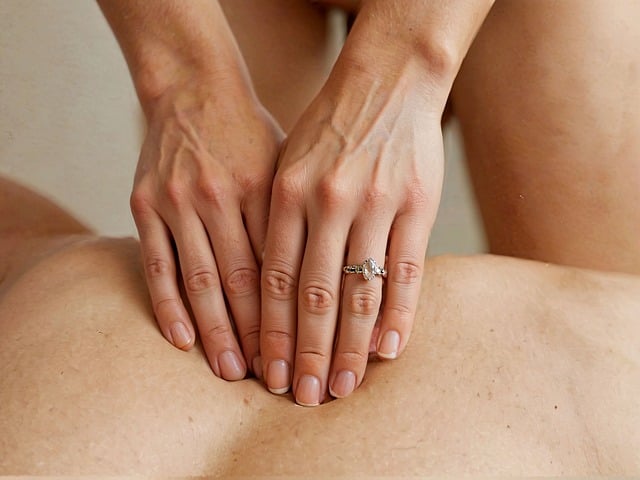Cold plunges, by exposing the body to brief periods of cold water, stimulate non-shivering thermogenesis, increasing metabolism and mobilizing fat stores. This practice activates brown adipose tissue (BAT), or 'brown fat', which burns calories to generate heat, further enhancing metabolic rate. Regular cold plunges promote calorie burn and improve energy expenditure, supporting weight loss efforts. Safe practices include checking water temperature, gradual adaptation, controlled breathing, dressing warmly post-plunge, and combining therapy with diet and exercise for optimal results. Always consult healthcare for concerns regarding cold exposure.
Discover the powerful effects of cold plunges on your body’s transformation journey. This practice, involving brief immersions in cold water, isn’t just a trend—it offers a surprising array of benefits for boosting metabolism and aiding weight loss. From increasing calorie burn to activating brown fat, cold water therapy can be a game-changer in your weight management strategy. Uncover how this simple yet effective technique can help you shed pounds and achieve your fitness goals.
How Cold Plunges Boost Metabolism and Promote Fat Loss
Cold plunges, a practice involving brief exposure to cold water, have gained attention for their potential to boost metabolism and aid in weight loss. When your body encounters a sudden drop in temperature, it responds by increasing its core temperature, which triggers a metabolic surge. This process, known as non-shivering thermogenesis, plays a crucial role in fat burning. During cold exposure, the body mobilizes fat stores for energy, leading to enhanced calorie burn and promoting weight management.
Additionally, cold water therapy stimulates the activation of brown adipose tissue (BAT), often referred to as ‘brown fat’. Unlike regular white fat, BAT generates heat by burning calories, contributing significantly to overall metabolic rate. Regular cold plunges can help activate and increase the efficiency of this beneficial fat type, further supporting weight loss efforts and improving overall energy expenditure.
The Role of Cold Water Therapy in Activating Brown Fat
Cold water therapy, including practices like cold plunges, has gained attention for its potential to boost metabolism and aid in weight loss. One key mechanism behind these benefits is the activation of brown fat cells. Brown fat, unlike white fat, generates heat by burning calories, making it a powerful ally in the body’s fat-burning process. When you subject your body to cold water immersion through a cold plunge, it triggers a physiological response that stimulates the activity of brown fat cells. This activation leads to increased energy expenditure, helping to burn excess calories and support weight management goals.
Additionally, cold exposure promotes a state of thermogenesis, where the body produces heat to maintain its core temperature, further elevating calorie burn. The cold water therapy triggers this process, which can be particularly beneficial for those looking to maximize their metabolic rate and achieve their fitness objectives, especially in conjunction with a healthy diet and regular exercise.
Additional Benefits of Cold Exposure for Weight Management
Beyond its impact on boosting metabolism, cold plunges offer a range of additional advantages for those managing their weight. Cold water therapy, when used strategically, can facilitate fat burning by increasing non-shivering thermogenesis—a process where the body burns calories to generate heat, targeting stored fat cells in particular. This effect is amplified by the subsequent warm-up period after exposure to cold, leading to a heightened metabolic rate even after the plunge is over.
Additionally, regular cold plunges may stimulate the activation of brown adipose tissue (BAT), often referred to as “brown fat.” Unlike white adipose tissue, BAT actively burns calories and releases heat, contributing significantly to overall calorie burn. By promoting cold exposure for weight management, individuals can harness the power of their body’s natural thermogenic responses, supporting their weight loss journeys in multifaceted ways.
Safe Practices and Considerations for Cold Plunges
When incorporating cold plunges into your routine for weight loss and metabolism boost, it’s crucial to observe safe practices and considerations. Always ensure proper safety measures, such as checking the water temperature beforehand, especially when using outdoor or natural bodies of water. The ideal temperature for a cold plunge is between 50-59°F (10-15°C), which is cold enough to stimulate your body without causing severe shock. Take gradual steps and start with shorter durations, like 10-30 seconds, to allow your body to adapt, especially if you’re new to this practice.
Additionally, proper breathing techniques are essential during a cold plunge. Focus on slow, deep breaths to help your body conserve oxygen and reduce the risk of hyperventilating. Post-plunge, dress warmly and avoid prolonged exposure to extreme cold to prevent overheating or chills. For optimal results in fat burning and metabolism stimulation, pair regular cold water therapy sessions with a balanced diet and consistent exercise routine. Remember that individual responses can vary, so listen to your body, and consult a healthcare professional if you have any concerns regarding cold exposure for weight management and calorie burn, particularly if you have underlying health conditions or are pregnant.
Cold plunges offer a unique and effective approach to boosting metabolism and supporting weight loss. By immersing yourself in cold water, you activate brown fat, enhancing fat burning and increasing calorie expenditure. This ancient practice has gained modern popularity for its numerous health benefits, including improved circulation and reduced inflammation. Incorporating regular cold exposure into your routine can be a game-changer for managing your weight, as it promotes a healthy metabolism and provides an extra boost to your fitness journey. Remember, always prioritize safety when trying new wellness practices, and consult professionals for personalized guidance.
